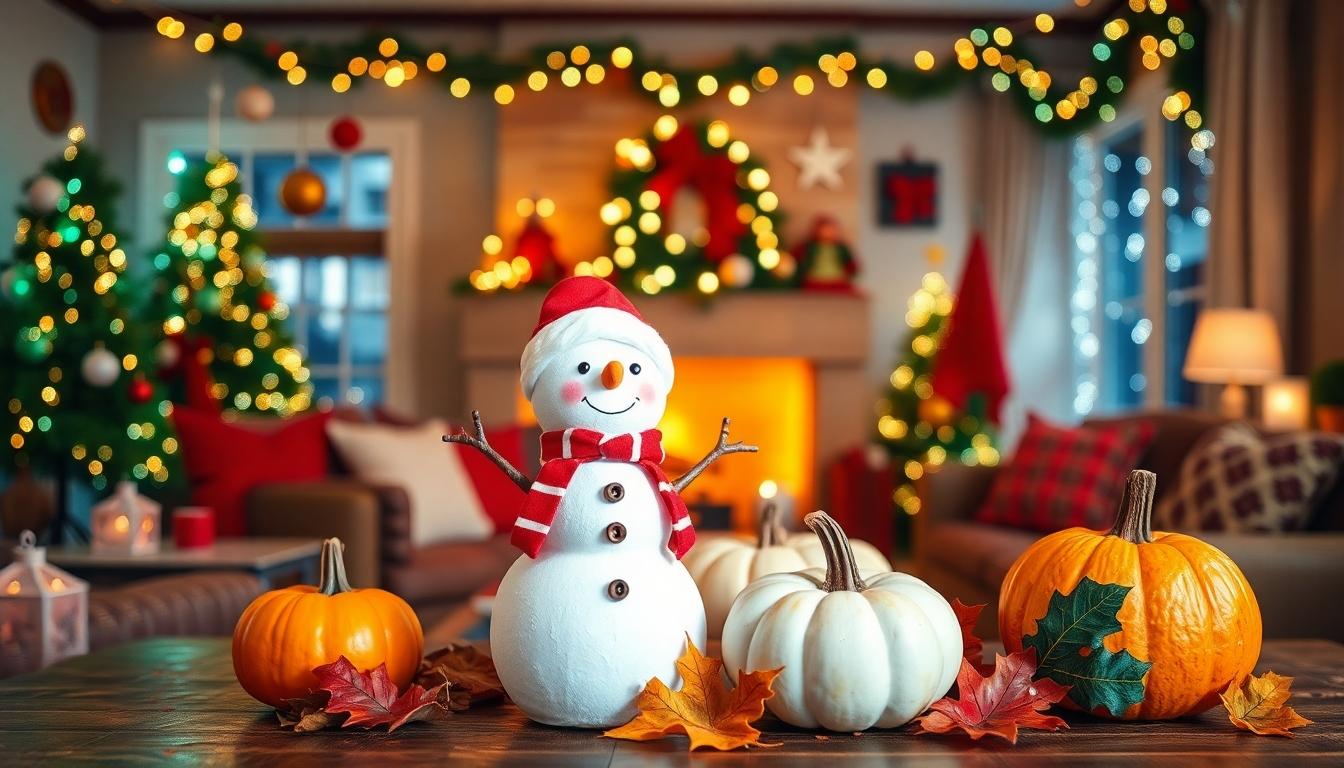Ever found yourself in a conversation lull? “Guess what” jokes might be your perfect solution! These simple yet hilarious conversation starters work their magic by building anticipation before delivering an unexpected punchline. They’re perfect for breaking the ice, entertaining kids, or simply bringing smiles to everyday interactions.
We’ve compiled the ultimate collection of “guess what” jokes to add to your humor arsenal. From clean jokes appropriate for children to more sophisticated wordplay for adults, there’s something here for everyone. These quick-fire jokes don’t require elaborate setups or perfect timing—just a willing audience and your best delivery.
10 Hilarious Guess What Jokes That Will Make Everyone Laugh
- Friend: “Guess what?”
You: “What?”
Friend: “Chicken butt!”
This classic joke never gets old and always triggers laughs with its simple, unexpected punchline that catches people off guard.
- Friend: “Guess what?”
You: “What?”
Friend: “I bought a new boomerang but threw the old one away… now I’m confused which one keeps coming back!”
Everyone loves this clever wordplay that creates a funny mental image of someone puzzled by returning boomerangs.
- Friend: “Guess what?”
You: “What?”
Friend: “I told my wife she was drawing her eyebrows too high. She looked surprised!”
The visual pun in this joke makes it particularly effective at generating genuine laughs at parties or gatherings.
- Friend: “Guess what?”
You: “What?”
Friend: “I couldn’t figure out why the baseball kept getting bigger. Then it hit me!”
People can’t help but chuckle at this joke’s clever double meaning that sneaks up on listeners.
- Friend: “Guess what?”
You: “What?”
Friend: “I’m reading a book about anti-gravity. It’s impossible to put down!”
Science nerds especially appreciate this witty punchline that plays on the physical properties of gravity in an unexpected way.
- Friend: “Guess what?”
You: “What?”
Friend: “I was wondering why the frisbee kept getting bigger and bigger… then it hit me!”
The delayed realization makes this joke work brilliantly as listeners connect the dots between the frisbee’s approach and the punchline.
- Friend: “Guess what?”
You: “What?”
Friend: “I used to be addicted to soap, but I’m clean now!”
Recovery jokes like this one deliver a surprisingly wholesome punchline that leaves people smiling without being offensive.
- Friend: “Guess what?”
You: “What?”
Friend: “I stayed up all night wondering where the sun went. Then it dawned on me!”
The wordplay in this joke works wonderfully because it combines a relatable scenario with an unexpected twist that clicks instantly.
- Friend: “Guess what?”
You: “What?”
Friend: “I told my doctor I broke my arm in two places. He told me to stop going to those places!”
Office environments love this joke because it plays on the misinterpretation of breaking an arm “in places” rather than in pieces.
- Friend: “Guess what?”
You: “What?”
Friend: “I’m on a seafood diet. Every time I see food, I eat it!”
This joke always elicits groans and laughs simultaneously, making it perfect for breaking tension in awkward social situations.
The Art of Delivering the Perfect Guess What Joke

Now that we’ve explored some hilarious guess what jokes, let’s jump into what makes these jokes truly effective. Mastering the delivery of a guess what joke can transform an ordinary punchline into an unforgettable moment of laughter.
Timing Is Everything
Perfect timing dramatically enhances the impact of guess what jokes. A well-placed pause before revealing the punchline builds anticipation and amplifies the surprise factor. For instance, after saying “Guess what?” wait a beat or two before delivering “The mathematician is afraid of negative numbers. He’ll stop at nothing to avoid them!” This strategic pause gives your audience a moment to wonder what’s coming next. Timing also involves selecting the right moment to share your joke, paying attention to the natural flow of conversation. Jumping in with a joke when everyone is engaged in serious discussion might fall flat, whereas introducing humor during a lull can revitalize the interaction.
Reading Your Audience
Understanding who you’re joking with significantly improves your success rate with guess what jokes. Different audiences respond to different types of humor, so tailoring your jokes to match their preferences shows thoughtfulness and increases laughter potential. Family gatherings might welcome clean, wholesome jokes like the “parade of rabbits” punchline about the “Receding Hare Line.” Professional settings often appreciate clever wordplay that doesn’t rely on controversial topics. We’ve found that incorporating relatable themes or shared experiences makes jokes more accessible and enjoyable for exact groups. Watching for feedback during your delivery allows you to adjust your approach, ensuring your guess what jokes land perfectly with every audience.
Classic Guess What Jokes That Never Get Old

These timeless jokes have been making people laugh for generations with their simple setups and punchy punchlines. Most rely on clever wordplay and unexpected twists that continue to entertain audiences of all ages.
Animal-Themed Classics
Animal jokes dominate the “guess what” genre with their universal appeal and familiar characters. The chicken joke remains the undisputed champion with variations like “Guess what animal crossed the road? The chicken—because it wanted to get to the other side!” This classic has spawned countless adaptations, including the more modern “Why did the chicken file a police report? It got mugged!” Playing on both crime and coffee terminology, these jokes show remarkable versatility. Geese also make frequent appearances in the joke lineup, with favorites such as “Guess what the geese had after falling downstairs? Goosebumps!” These animal-themed classics work because they combine familiar creatures with unexpected situations, creating the perfect formula for guaranteed laughs.
Food-Related Favorites
Food provides fertile ground for “guess what” jokes, offering plenty of opportunities for puns and visual humor. Watermelon jokes remain particularly popular, as seen in “Guess what makes you go on red and stop on green? Eating a watermelon!” This joke cleverly uses the fruit’s colors to create an unexpected traffic light reference. Cookie jokes add a dash of personality to inanimate objects, with gems like “Guess what the cookie did after feeling crummy? It went to the doctor.” Coffee also makes frequent appearances in food-related jokes, often playing on words like “mugged” that connect beverage terminology with other contexts. These food jokes work exceptionally well at dinner parties or family meals, creating relevant humor that everyone can relate to while enjoying their food.
Kid-Friendly Guess What Jokes for Family Fun

Looking for some family-friendly humor that’ll keep the little ones giggling? These guess what jokes are perfectly crafted for children, combining playful setups with unexpected punchlines that everyone can enjoy.
Clean Jokes for Young Children
Kids love jokes that are silly and easy to remember. These clean guess what jokes will have your little ones laughing while keeping the content appropriate:
- “Guess who all the little cereal kids are afraid of?” – The cereal killer!
- “One friend took the elevator while the other took the staircase. Guess what?” – Both were raised differently!
- “I met a woman with one leg today. Guess what her name was?” – Eileen!
- “Guess what makes the moon so cold?” – She’s always deflecting the sun’s rays!
- “The banana went to the doctor; guess what happened?” – He was not peeling well!
These jokes use everyday scenarios and simple wordplay that young children can understand and relate to. They’re perfect for family game nights, car rides, or anytime you need to brighten someone’s day.
Educational Guess What Jokes
Sneak some learning into joke time with these educational guess what jokes that blend humor with interesting facts:
- “This building has the most stories. Can you guess what it is?” – A library!
- “Guess what presidents were the greenest?” – The Bushes!
- “The baby tomato was running late for school. Guess what his mommy said?” – “Come on, ketch-up!”
- “Santa Claus’s elves went to school. Guess what they learned?” – Elfabets!
These jokes do double duty by making kids laugh while introducing vocabulary, concepts, and wordplay that expands their knowledge. They’re particularly effective during assignments time or as a fun way to reinforce lessons learned at school.
Each joke follows the captivating “Guess what…?” format that creates anticipation and invites participation, making them ideal for interactive family fun. The themes revolve around safe, familiar topics like school, food, and holidays that resonate with children of all ages.
Clever Wordplay in Guess What Joke Formats

Wordplay forms the foundation of truly memorable guess what jokes, creating unexpected twists that catch listeners by surprise. These clever linguistic tricks transform simple setups into laugh-out-loud moments that stick with audiences long after the punchline lands.
Puns and Double Meanings
Puns reign supreme in the industry of guess what jokes, creating humor through words with multiple interpretations. “Guess what you call someone who never falls down the stairs? A stair-voyant!” This joke cleverly plays on “clairvoyant,” suggesting supernatural foresight about staircase safety. Another excellent example showcases how these jokes can incorporate everyday objects: “Guess what musical groups a wind turbine likes to listen to on the radio? Heavy-metal bands!” The humor lies in the dual meaning of “fan” – both as an enthusiast and as a literal rotating blade. We’ve found that the most successful guess what jokes often rely on these linguistic surprises, where words function in multiple ways simultaneously. For instance, “I met a woman with one leg today. Guess what her name was? Eileen!” creates humor by connecting the name “Eileen” with the phrase “I lean,” perfectly describing someone with a single leg.
Rhyming Guess What Jokes
Rhyming elements add a musical quality to guess what jokes, making them more memorable and captivating for audiences. Traditional nursery rhymes can be cleverly transformed into joke formats, as seen in “Knick-knack paddywhack, guess what that old man gave his dog? A bone!” The familiar rhythm creates anticipation while the punchline delivers the expected rhyme in an unexpected context. Sound patterns in these jokes help build momentum toward the punchline, creating a satisfying resolution when the rhyme completes. Rhyming guess what jokes work particularly well with younger audiences who naturally respond to rhythmic patterns in language. These jokes combine the surprise element of traditional guess what formats with the pleasing cadence of rhymes, creating a doubly effective humor technique that’s both predictable in structure yet surprising in content.
Seasonal and Holiday Guess What Jokes

Holiday celebrations become even more enjoyable with themed jokes that capture the spirit of each season. We’ve collected some of the best seasonal “guess what” style jokes to share at your next holiday gathering.
Christmas and Winter Jokes
Snowmen become hilarious joke subjects during the winter months. “What does a snowman eat for breakfast? Guess what? Frosted Flakes!” This clever pun connects the frosty character to a popular breakfast cereal, making it perfect for winter mornings.
Santa jokes bring holiday cheer to any Christmas party. “How do you know when Santa is in the room? Guess what? You can sense his presents!” This play on words (presents/presence) captures the magical feeling of Christmas while delivering a laugh.
Weather-related humor works wonderfully for winter gatherings. “Why did the snowman quit his job? Guess what? Because he was snowed under!” This joke cleverly uses a common expression about being overwhelmed with work and applies it literally to a snowman’s situation.
Halloween and Autumn Jokes
Pumpkins star in many Halloween jokes that capture the festive atmosphere. “Why did the pumpkin go to the party? Guess what? Because it was a gourd time!” This play on words (good/gourd) connects perfectly with the autumn harvest theme.
Skeleton jokes rattle up laughter during spooky season. “Why did the skeleton refuse to go to the party? Guess what? Because he had no body to go with!” This humorous take on “nobody” versus “no body” makes for a bone-tickling Halloween joke.
Fall foliage inspires seasonal comedy for autumn celebrations. “Why did the leaf go to the doctor? Guess what? Because it was feeling a little wilted!” This personification of a leaf creates a relatable scenario that’s perfect for the changing seasons.
Cultural References in Modern Guess What Jokes

Today’s “Guess What” jokes have evolved to incorporate shared cultural knowledge, creating humor that resonates with exact audiences and communities.
Pop Culture Connections
Modern “Guess What” jokes frequently leverage popular culture references to create instant recognition and connection. Instead of the traditional “Guess what? Chicken butt!” punchline, you’ll now hear variations like “Guess what? Chicken butt… unless you’re a Marvel fan—then it’s Thanos’ snap!” These jokes assume familiarity with major franchises and serve as communal touchstones, especially among younger audiences immersed in streaming-era entertainment. Character cameos appear in specialized joke formats, such as the “Draw Blood Third Guy” setup that plays on situational irony. We’ve noticed these jokes typically target exact subcultures rather than broad demographics, allowing for more nuanced humor that rewards in-group knowledge. The strategic use of recognizable icons (like Harry Potter) in these jokes significantly increases their relatability and shareability across different social groups.
Internet-Inspired Jokes
Digital culture has transformed “Guess What” jokes with meta-humor and self-referential twists that reflect our online experiences. Jokes like “Guess what? The algorithm! (It already guessed for you)” cleverly critique our tech dependence while maintaining the familiar joke structure. TikTok and other short-form platforms have prioritized brevity in these jokes, producing snappy one-liners such as “The rotation of the Earth really makes my day” that blend wordplay with geek-culture appeal. Format-bending jokes that reflect online absurdism have become increasingly popular, with punchlines that deliberately subvert traditional expectations. Meme structures and viral templates allow these jokes to easily spread across social media, Reddit, and messaging apps, creating layered, referential humor that’s distinctly different from universal setups like classic knock-knock jokes. These internet-inspired versions often incorporate irony and reversal techniques where punchlines use pop culture tropes to create unexpected endings.
How to Create Your Own Guess What Jokes

Creating your own “guess what” jokes can be a fun way to entertain friends and family. With a bit of practice and creativity, you’ll be crafting laugh-worthy jokes in no time.
Finding the Right Setup
The setup of your “guess what” joke is crucial for creating the perfect misdirection that leads to laughter. We recommend using misdirection techniques by framing your question to imply complexity while leading to a simple, pun-based answer. For example, “Guess what’s orange and sounds like a parrot?” with the punchline “A carrot” works because it plays with sound similarities while being unexpectedly simple.
Incorporating wordplay is another effective approach for creating memorable setups. Try leveraging homophones or words with double meanings to create your joke. A classic example is “Guess what the buffalo said to his son?” with the answer “Bye son!” which plays on the word “bison.”
Relying on common knowledge allows your audience to connect with your joke more easily. You can use familiar concepts or trivia that most people understand. For instance, “Guess what has ears but can’t hear?” with the answer “A cornfield” works because everyone knows corn has “ears” but not in the listening sense.
Crafting the Perfect Punchline
Brevity and surprise are essential elements of an effective punchline. We’ve found that keeping your punchline short and unexpected creates the maximum impact. Consider the joke “Guess what the clock said?” with the simple punchline “I’m always ticked off.” The brevity combined with the play on words makes it memorable.
Testing for clarity should be part of your joke development process. You’ll want to eliminate unnecessary words that might confuse your audience or dilute the humor. For example, the straightforward joke “Guess what the telephone did?” with the punchline “It gave a ring” works because it’s clear and concise.
Using jab lines can help maintain engagement while building up to your punchline. These mini-jokes within the setup keep your audience interested and attentive. A good example is “Guess what the ocean said… (pause)… Nothing, it just waved.” The pause creates anticipation before delivering the punchy conclusion.
Remember to revise your jokes through practice and audience feedback. The timing and delivery of your “guess what” jokes can significantly impact their success. Pay attention to which jokes get the biggest laughs and refine your technique accordingly. With these strategies, you’ll be creating your own hilarious “guess what” jokes that will have everyone laughing in no time.
Using Guess What Jokes as Icebreakers

“Guess what” jokes serve as perfect conversation starters due to their interactive nature and ability to instantly engage others. These simple yet effective jokes create an atmosphere of participation that can break down social barriers.
For Social Gatherings
“Guess what” jokes thrive in casual settings thanks to their brevity and collaborative structure that requires audience participation. They’re particularly effective at parties or informal meetups where breaking the ice is essential. Try opening with something like “Guess what? I’m reading a book about anti-gravity. It’s impossible to put down!” to engage listeners through clever wordplay while encouraging group interaction. Animal-themed jokes such as “Guess what animal loves heavy metal? A frog—they ‘croak’ every day!” combine familiar themes with unexpected references that resonate across different age groups. These jokes actively reduce social tension by prompting shared guessing experiences and collective laughter, making them invaluable tools for initiating conversations among strangers or reconnecting with acquaintances.
For Classroom Settings
Educators frequently leverage “Guess what” jokes to boost student engagement while reinforcing important concepts through humor. Classroom-friendly options like “Guess what’s untrustworthy? Stairs—they’re always ‘up to something’!” introduce homophone-based wordplay that illustrates language principles in a memorable way. Academic humor such as “Guess what Santa calls his elves? Subordinate Clauses!” cleverly integrates grammar lessons into jokes students will actually remember. These educational quips serve dual purposes by strengthening understanding of curriculum topics while simultaneously fostering positive peer interactions. The predictable format of “Guess what? [Punchline]” provides clear participation cues that help younger students engage confidently with the material. Brief 1-2 line structures ensure quick comprehension, while adaptable themes make these jokes suitable for various subjects and age groups.
Why Guess What Jokes Remain Timeless in the Age of Memes

Even though the proliferation of memes and digital humor, “Guess What” jokes continue to thrive for several compelling reasons. Their enduring popularity stems from fundamental characteristics that transcend changing media landscapes and evolving comedy trends.
Easy to Share and Remember
“Guess What” jokes remain incredibly accessible due to their simple format and oral tradition roots. Anyone can memorize these jokes without needing visual aids or complex setups. Their brevity makes them perfect for sharing in person, over text messages, or during phone calls. The straightforward structure allows them to be passed from person to person without losing their humorous impact, making them staples in everyday conversations.
Universal Appeal Across Age Groups
These jokes possess remarkable versatility that appeals to diverse audiences regardless of age or background. Children delight in the playful anticipation of “Guess what?” while adults appreciate the clever wordplay or unexpected twists. The format crosses cultural boundaries effortlessly, as the basic question-and-answer structure exists in virtually every language. This universal quality ensures “Guess What” jokes remain relevant even as other humor trends come and go.
Adaptability to Contemporary References
“Guess What” jokes easily evolve with language and current events, keeping them fresh and relevant. Modern references can be incorporated into the traditional format, allowing these jokes to stay current while maintaining their classic structure. New jokes emerge that reference technology, pop culture, or recent happenings, demonstrating how this timeless format continues to adapt. Their flexibility ensures they never feel outdated even as society and language evolve.
Interactive Nature Fosters Connection
The participatory aspect of “Guess What” jokes creates meaningful social interactions that digital humor often lacks. These jokes require active engagement from both the teller and listener, establishing a direct connection between people. The call-and-response nature invites participation and builds anticipation in ways that passive consumption of memes cannot replicate. This interactive quality helps build rapport and strengthens social bonds in face-to-face settings.
Simplicity in an Era of Complexity
In today’s overwhelming digital industry, the straightforward nature of “Guess What” jokes provides refreshing simplicity. While memes often require knowledge of exact contexts or internet subcultures, these jokes rely on universal understanding and basic wordplay. Their accessibility doesn’t demand technical knowledge or awareness of rapidly changing trends. This simplicity allows them to remain effective across generations, making them genuinely timeless forms of humor.
The Surprising Benefits of Sharing Guess What Jokes
Guess what jokes do more than just make us laugh. They create moments of connection in our increasingly digital industry while exercising our creativity and wordplay skills.
Whether you’re breaking the ice at a party using classic animal jokes or teaching your kids through educational punchlines these simple jokes pack surprising power. They’re adaptable enough to fit any occasion from holiday gatherings to classroom settings.
We hope you’ll try sharing some of these jokes with friends and family. Better yet create your own using the techniques we’ve shared. The best part? You don’t need to be a comedy expert to get started. Just ask “Guess what?” and watch as smiles spread across every face in the room.
Frequently Asked Questions
What makes “guess what” jokes effective for conversations?
“Guess what” jokes create anticipation and deliver unexpected punchlines, making them perfect for breaking ice and reviving stalled conversations. Their simple format engages listeners by inviting participation before delivering a humorous twist. These jokes work well with various audiences and can instantly bring joy to interactions due to their accessibility and surprising nature.
Are “guess what” jokes suitable for children?
Absolutely! Many “guess what” jokes are specifically designed to be kid-friendly with clean punchlines and simple wordplay that children can understand and remember. Examples include jokes about cereals, bananas, and animals that use playful setups without inappropriate content. These jokes are perfect for family game nights, car rides, and other situations where inclusive humor is needed.
How can I improve my delivery of “guess what” jokes?
Master your timing by pausing before revealing the punchline to build anticipation. Read your audience carefully and tailor your jokes to match their preferences and sense of humor. Incorporate relatable themes that resonate with listeners. Practice your delivery and adjust based on audience feedback. Remember that your enthusiasm and confidence can transform an ordinary joke into an unforgettable moment of laughter.
What are some classic “guess what” joke themes?
Animal-themed jokes (like the iconic “chicken butt” joke) and food-related jokes are perennial favorites. Animal jokes typically utilize clever wordplay and unexpected twists, while food jokes offer relatable humor that works well during meals and gatherings. These classic themes have stood the test of time because they connect with universal experiences and are accessible to audiences of all ages.
Can “guess what” jokes be educational?
Yes! Educational “guess what” jokes blend humor with interesting facts, making learning fun. Examples include jokes about libraries having “the most stories” or wordplay that introduces new vocabulary. These jokes reinforce concepts learned at school while entertaining children. The participatory format encourages engagement with educational content, making these jokes valuable tools for parents and teachers alike.
How do seasonal “guess what” jokes enhance holiday gatherings?
Seasonal jokes capture the spirit of holidays while providing laughter tailored to specific celebrations. Winter jokes about snowmen and Santa, Halloween jokes featuring pumpkins and skeletons, and autumn-themed humor create shared experiences during festive gatherings. These timely jokes acknowledge the season while maintaining the familiar “guess what” format, making them perfect conversation starters at holiday parties.
How have “guess what” jokes evolved with modern culture?
Modern “guess what” jokes now incorporate cultural references, pop culture connections, and digital humor. They leverage familiarity with major franchises and online experiences to create more nuanced humor. Internet-inspired jokes often utilize meta-humor and self-referential twists that reflect our digital lives. These contemporary adaptations ensure the format stays relevant while appealing to specific audience interests and knowledge.
How can I create my own “guess what” jokes?
Craft your setup using misdirection and wordplay based on common knowledge. Develop punchlines that are brief and surprising, focusing on unexpected twists. Practice your jokes and revise based on audience feedback. Effective jokes often play with double meanings, incorporate puns, or use rhyming elements for added appeal. Start with familiar topics and gradually experiment with more creative concepts as you gain confidence.
Why do “guess what” jokes work well as icebreakers?
These jokes foster participation and reduce social tension with their interactive format. The predictable “guess what?” provides clear cues for audience engagement, making it easy for people to join in. Their brevity prevents awkward silences, while the shared laughter creates immediate connection. The low-pressure format works well in various settings from social gatherings to classrooms, making them reliable tension-breakers.
Why have “guess what” jokes remained popular in the age of memes?
Despite evolving comedy trends, these jokes remain relevant because they’re easily shareable, memorable, and have universal appeal across age groups. They adapt well to contemporary references while maintaining their interactive nature that fosters human connection. Their simplicity offers relief in an era of complexity, and they can be enjoyed without technological requirements, making them accessible to everyone regardless of digital literacy.







